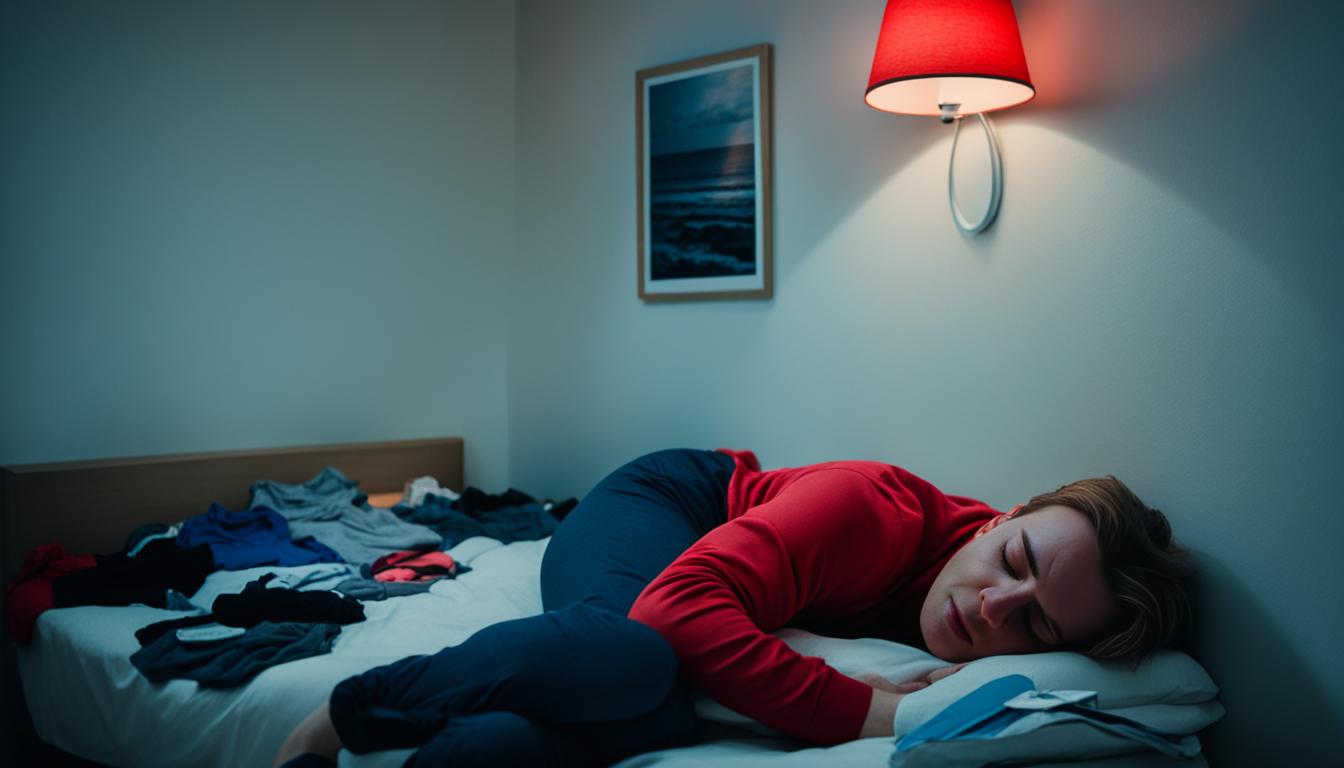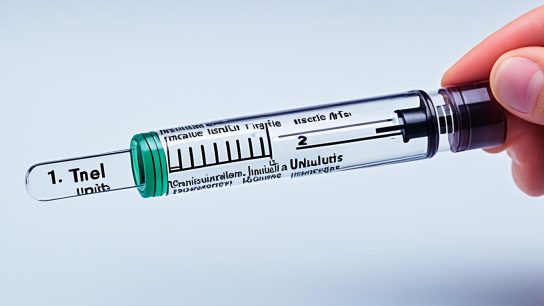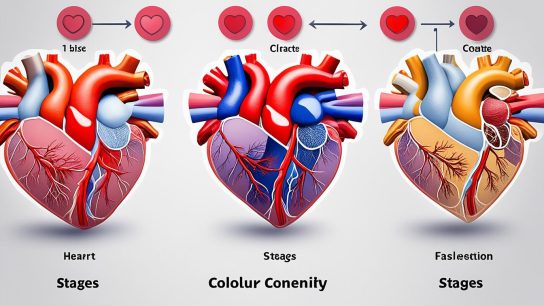If you’re experiencing painful or itchy marks on your skin at night but can’t find any evidence of bed bugs in your home, there could be several other possible reasons for these nighttime bites. While bed bugs are commonly associated with nighttime biting, it’s important to consider other insects, skin conditions, and allergies that could be causing these symptoms.
Bed bug bites can be difficult to identify unless you find evidence of the insects in your home. They can resemble other insect bites or several skin conditions. Bed bug bites tend to look similar to other insect bites, appearing as red, itchy spots on exposed parts of the body such as the face, arms, hands, neck, and legs. These bites often appear in a line or zigzag pattern and can develop into larger weals if you are allergic to them. However, it’s important to note that the appearance of the bites can vary depending on the individual’s skin color. To determine if you have bed bugs, you should also look for other signs of infestation, such as reddish or rust-colored stains on sheets or mattresses, tiny dark spots from bug feces, specks of blood on surfaces, eggs that are about 1 millimeter in size, shed exoskeletons, and a sweet, musty odor.
If you’re getting bitten at night but can’t find any evidence of bed bugs, there are several other bugs that are known to be active during nighttime. These include spiders, mosquitos, mites, and fleas. Spider bites can resemble bed bug bites, with symptoms such as swelling, itching, rash, blistering, and systemic symptoms like muscle spasms and nausea. Mosquito bites cause raised, itchy welts that typically don’t appear in a line or pattern and can transmit diseases like malaria, West Nile virus, and dengue fever. Mite bites can cause a rash, inflamed bumps, itchiness, and swollen skin. Flea bites are usually found on the feet, ankles, or lower legs and are often mistaken for bed bug bites. Identifying the specific insect responsible for the bites can help determine the appropriate course of action.
In addition to other bugs, there are several skin conditions that can resemble bed bug bites. Hives, also known as urticaria, are red bumps or welts that form on the skin due to an allergic reaction. Fungal infections can cause an itchy and bumpy rash on various parts of the body, particularly in moist areas. Miliaria, also known as heat rash, is a common condition caused by inflammation or blockage of sweat ducts, resulting in itchy bumps. Dermatitis herpetiformis, a rare autoimmune condition, causes itchy blisters and redness on the skin. It’s important to consult with a healthcare professional to determine if your symptoms are related to a skin condition or insect bites.
In most cases, bed bug bites will go away on their own within one to two weeks. However, if you develop a fever, experience swelling or blisters, or notice signs of infection, it’s important to seek medical attention. Additionally, if you’re unable to identify the cause of the bites or if they worsen over time, it’s recommended to consult with a doctor or dermatologist. They can help determine the underlying cause of the bites and provide appropriate treatment or further investigation if needed.
It’s important to note that using rubbing alcohol as a home remedy for bed bugs is not considered an effective solution. While alcohol can kill bed bugs upon direct contact, it is not able to eradicate an entire infestation. Bed bugs are excellent at hiding, and even if you spray visible bugs with rubbing alcohol, it may not eliminate the entire colony or reach bugs that are hidden in cracks and crevices. Additionally, using rubbing alcohol on bedding, upholstery, and carpets can pose a fire hazard due to its flammability. To effectively control a bed bug infestation, it’s recommended to contact a professional pest control service.
If you’re getting bitten at night but can’t find any evidence of bed bugs, it’s important to consider other potential causes such as other bug bites, skin conditions, or allergic reactions. Identifying the specific insect responsible for the bites can help determine the appropriate course of action, whether it’s seeking medical attention, implementing pest control measures, or addressing underlying skin conditions. Remember, it’s always best to consult with healthcare professionals or pest control experts for a proper diagnosis and appropriate treatment.
Getting Bitten at Night but No Sign of Bed Bugs?
If you’re experiencing bites at night without any evidence of bed bugs, it’s important to understand how to identify bed bug bites and signs of infestation. Bed bug bites can often be mistaken for other insect bites or skin conditions, making it challenging to determine the source of the problem. By recognizing the characteristics of bed bug bites and looking for additional signs of infestation, you can better assess the situation and take appropriate measures.
Characteristics of Bed Bug Bites
Bed bug bites typically appear as red, itchy spots on exposed areas of the body, such as the face, arms, hands, neck, and legs. They may resemble other insect bites and often appear in a line or zigzag pattern. However, it’s important to note that the appearance of bed bug bites can vary depending on an individual’s skin color.
Bed bug bites can develop into larger weals if you have an allergic reaction to them. These bites are usually accompanied by itching and discomfort, which may persist for several days. It’s essential to refrain from scratching the bites to prevent secondary infections.
Signs of Bed Bug Infestation
In addition to identifying the bites, it’s crucial to look for other signs of a bed bug infestation. These signs can help confirm the presence of bed bugs:
- Reddish or rust-colored stains on sheets or mattresses: These stains are typically caused by bed bug feces or crushed bed bugs.
- Tiny dark spots on surfaces: These are also signs of bed bug feces.
- Specks of blood on sheets or pillows: They may indicate that you rolled onto a bed bug after it fed.
- Eggs: Bed bug eggs are about 1 millimeter in size, oval-shaped, and have a pearly white color.
- Shed exoskeletons: As bed bugs grow, they shed their exoskeletons, which can be found around their hiding places.
- A sweet, musty odor: Bed bugs release a distinctive odor that is often described as sweet and musty. This odor may be noticeable in areas with a significant infestation.
By carefully examining your sleeping area and paying attention to these signs, you can gather more evidence of a potential bed bug infestation.
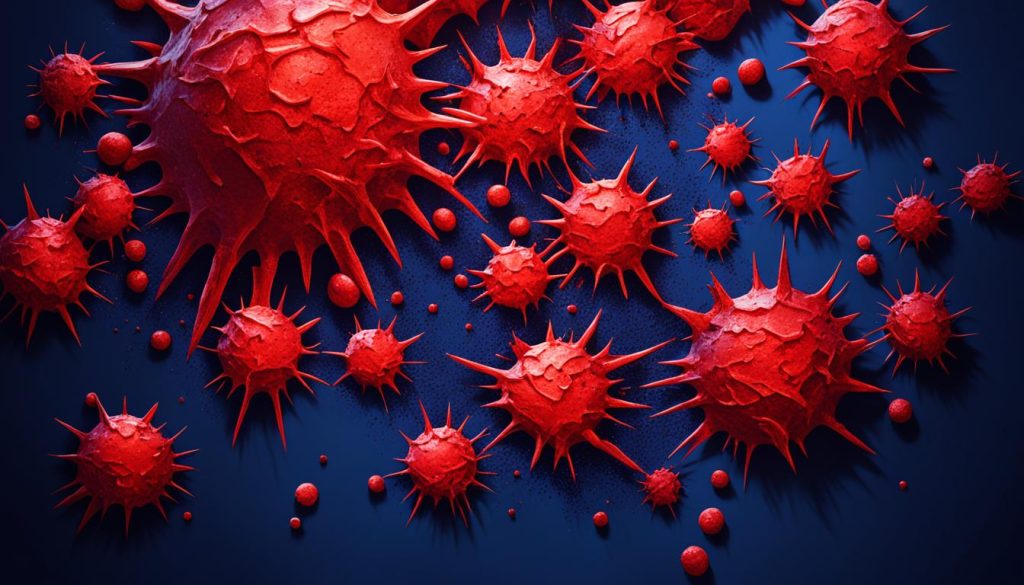
Other Bugs That Bite at Night
If you find yourself waking up with mysterious bites but no evidence of bed bugs, don’t worry, there are other bugs that are active during the nighttime hours. These insects can be the source of your unidentified bites while sleeping, adding to the nighttime bites mystery. Let’s explore some of the common culprits:
1. Spiders
Spider bites can be mistaken for bed bug bites due to similar symptoms such as swelling, itching, rash, blistering, and even systemic symptoms like muscle spasms and nausea. If you suspect spider bites, it’s important to identify and address the specific spider species to determine the appropriate course of action.
2. Mosquitos
Mosquito bites can cause raised, itchy welts on the skin. Unlike bed bug bites, mosquito bites typically don’t appear in a line or pattern. It’s essential to protect yourself from mosquito bites as they can transmit diseases such as malaria, West Nile virus, and dengue fever.
3. Mites
Mite bites can cause a rash, inflamed bumps, itchiness, and swollen skin. These bites are often the result of contact with dust mites or infested bedding. If you suspect mite bites, take steps to eliminate the mites from your environment and seek medical advice if symptoms persist.
4. Fleas
Flea bites are commonly found on the feet, ankles, or lower legs and can often be mistaken for bed bug bites. If you have pets, fleas may be the source of your nighttime bites. Consult with a veterinarian to address the flea infestation and prevent further bites.
Identifying the specific insect responsible for the bites is crucial in determining the appropriate course of action. If you are unsure of the culprit, consider reaching out to a pest control professional or healthcare provider for further assistance.
Unidentified Bites at Night: A Comparison
| Bug | Appearance | Symptoms | Prevention |
|---|---|---|---|
| Bed Bugs | Bites appear as itchy red spots often in a line or zigzag pattern. | Itchy, red welts that may develop into larger weals in allergic individuals. Other signs of infestation include reddish or rust-colored stains on sheets, bug feces, and a sweet, musty odor. | Regularly inspect bedding and furniture, use mattress covers, and employ professional pest control if infestation is confirmed. |
| Spiders | Bites may resemble bed bug bites with swelling, itching, rash, blistering, and systemic symptoms. | Varies depending on the spider species but can include localized pain, muscle spasms, and nausea. | Clear away clutter, seal cracks and crevices, and eliminate spider habitats. |
| Mosquitos | Raised, itchy welts that generally do not appear in a line or pattern. | Itching and potential transmission of diseases such as malaria, West Nile virus, and dengue fever. | Use mosquito repellent, wear protective clothing, and eliminate standing water sources. |
| Mites | May cause a rash, inflamed bumps, itchiness, and swollen skin. | Symptoms vary but can include intense itching, skin irritation, and redness. | Vacuum regularly, wash bedding in hot water, and consider using allergen-proof covers on mattresses and pillows. |
| Fleas | Bites are commonly found on the feet, ankles, or lower legs. | Itchy, red, and raised bumps that can cluster into groups or rows. | Treat pets for fleas, vacuum frequently, and wash bedding in hot water. |
Understanding the distinctive characteristics and symptoms of these different bites on skin with no bed bugs can help you determine the appropriate actions to take. Remember to consult with professionals if you require assistance in identifying the source of your nighttime bites or implementing effective pest control measures.
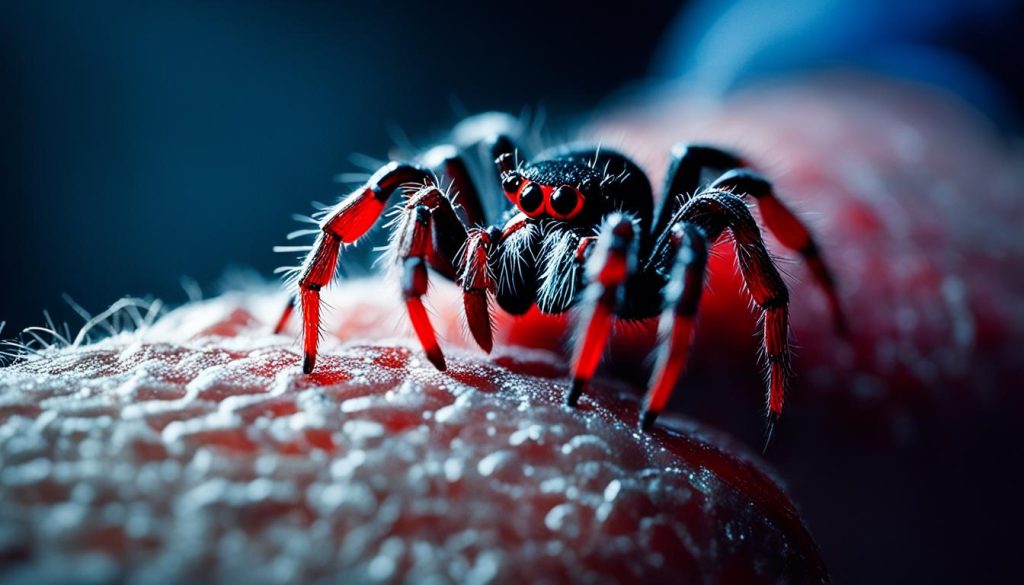
Rashes That Resemble Bed Bug Bites
In addition to other bugs, there are several skin conditions that can resemble bed bug bites. It’s important to be aware of these conditions to help determine the cause of your unexplained bites in bed and mysterious nocturnal skin irritation.
Hives
Hives, also known as urticaria, are red bumps or welts that form on the skin due to an allergic reaction. They can be itchy and may appear suddenly and disappear quickly. Hives can occur as a result of various triggers, such as medication, food, insect bites, or infections. If you’re experiencing unexplained bites at night with no bed bug presence, hives may be a possible explanation.
Fungal Infections
Fungal infections can cause an itchy and bumpy rash on various parts of the body, particularly in moist areas. Common fungal infections include athlete’s foot, ringworm, and yeast infections. These infections thrive in warm and damp environments, making them more likely to occur in areas such as the groin, feet, and armpits. If you suspect that your nocturnal skin irritation is caused by a fungal infection, it’s important to seek appropriate medical treatment.
Miliaria (Heat Rash)
Miliaria, also known as heat rash, is a common condition caused by inflammation or blockage of sweat ducts. This can occur when sweat is unable to escape the skin, leading to itchy bumps and discomfort. Heat rash is more likely to develop in hot and humid conditions or when certain clothing materials trap sweat against the skin. If you’re experiencing nocturnal biting without bed bug presence and notice a bumpy rash that worsens in warm conditions, it could be a case of miliaria.
Dermatitis Herpetiformis
Dermatitis herpetiformis is a rare autoimmune condition that causes itchy blisters and redness on the skin. It is commonly associated with celiac disease and occurs when the immune system mistakenly attacks the gluten proteins found in certain foods. If you suspect that your nighttime bug bites are actually a manifestation of dermatitis herpetiformis, it is critical to consult with a healthcare professional for proper diagnosis and appropriate management.
Remember, it’s important to consult with a healthcare professional to determine if your symptoms are related to a skin condition or insect bites. They can provide an accurate diagnosis and recommend the appropriate treatment or further investigation if needed.
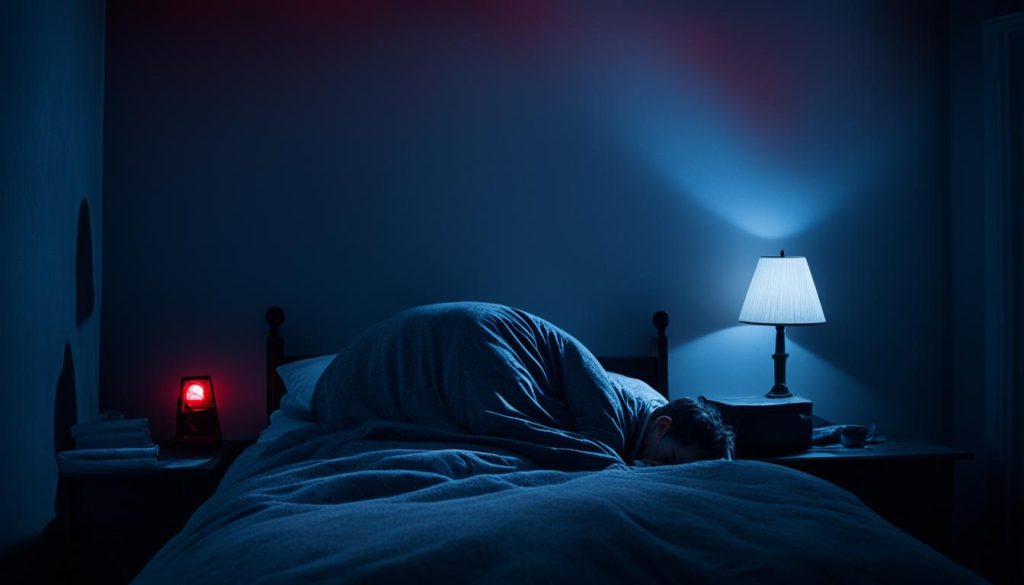
When to Seek Medical Attention?
In most cases, bed bug bites will go away on their own within one to two weeks. However, if you develop a fever, experience swelling or blisters, or notice signs of infection, it’s important to seek medical attention. Additionally, if you’re unable to identify the cause of the bites or if they worsen over time, it’s recommended to consult with a doctor or dermatologist. They can help determine the underlying cause of the bites and provide appropriate treatment or further investigation if needed.
It’s crucial to take nighttime bites with no bed bug evidence, unexplained bites in bed, and mysterious nocturnal skin irritation seriously. Seeking medical attention when necessary can help in identifying the root cause and improving your overall well-being.
If you experience any of the following symptoms, contact a healthcare professional:
- Persistent fever
- Severe swelling
- Intense blistering
- Signs of infection (redness, pain, pus, warmth)
- Unexplained worsening of symptoms
A medical expert can provide a proper diagnosis, offer appropriate treatment options, and suggest necessary investigations to address your nighttime bites and related concerns.
Misconceptions About Alcohol Treatment and Bed Bugs
When faced with bed bug bites and no signs of infestation, some individuals may turn to rubbing alcohol as a home remedy. However, it’s important to understand that using rubbing alcohol is not considered an effective solution for eradicating bed bugs. While alcohol can kill the bugs upon direct contact, it is unable to eliminate an entire infestation.
Bed bugs are notorious for their ability to hide in cracks and crevices, making it difficult to reach and eliminate all the bugs with rubbing alcohol alone. Even if you manage to spray visible bugs, there’s a high chance that you may not address the entire colony or bugs hiding in inaccessible areas.
Furthermore, using rubbing alcohol on bedding, upholstery, and carpets can pose a significant fire hazard due to its flammability. It’s crucial to prioritize safety and avoid any potential risks associated with using alcohol as a treatment method.
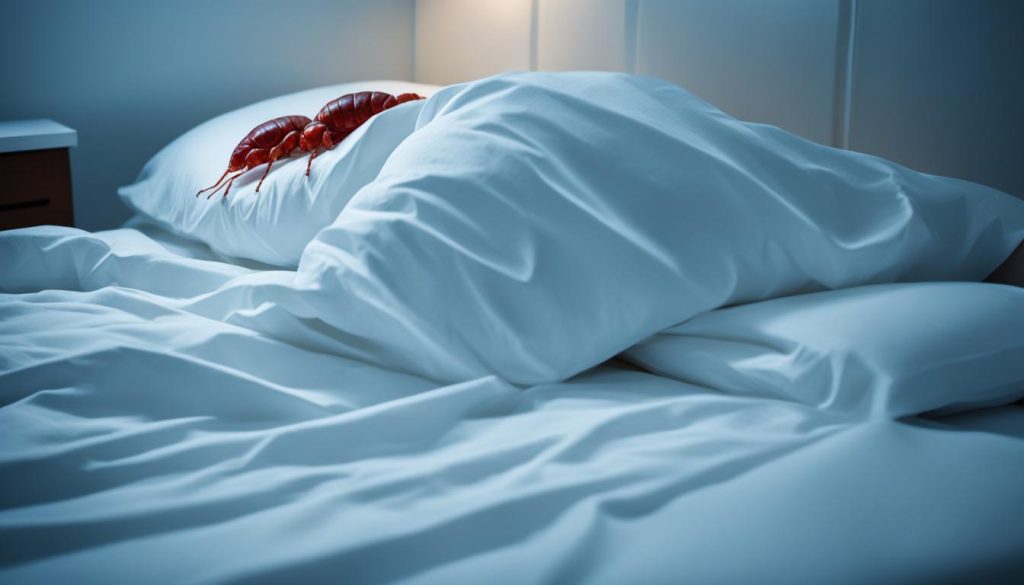
To effectively control a bed bug infestation, it’s recommended to seek professional pest control services. Experienced exterminators have the knowledge, tools, and techniques to accurately identify and eradicate bed bugs from your home. They can implement comprehensive treatment plans that target the entire infestation, ensuring long-term relief and peace of mind.
Conclusion
If you’re experiencing nighttime bites but can’t find any evidence of bed bugs, it’s important to explore other possible causes. There are various insect bites, skin conditions, and allergic reactions that can mimic the symptoms of bed bug bites.
Identifying the specific insect responsible for the bites is crucial in determining the appropriate course of action. This could involve seeking medical attention, implementing pest control measures, or addressing underlying skin conditions.
Remember, it’s always recommended to consult with healthcare professionals or pest control experts for a proper diagnosis and appropriate treatment plan. They can help you identify the root cause of your nighttime bites without bed bugs and guide you towards effective solutions for relief.
FAQ
1. Why am I getting bitten at night if there are no signs of bed bugs?
There are several other possible reasons for nighttime bites, including other insects, skin conditions, and allergies.
2. How can I identify bed bug bites and signs of infestation?
Bed bug bites appear as red, itchy spots on exposed areas of the body and often form a line or zigzag pattern. Signs of infestation may include reddish stains, tiny dark spots, specks of blood, eggs, shed exoskeletons, and a sweet, musty odor.
3. What other bugs bite at night?
Other bugs that are known to be active during nighttime include spiders, mosquitos, mites, and fleas. Spider bites can resemble bed bug bites, while mosquito bites cause raised, itchy welts. Mite bites can cause a rash, and flea bites are often mistaken for bed bug bites.
4. What skin conditions resemble bed bug bites?
Skin conditions that can resemble bed bug bites include hives, fungal infections, miliaria (heat rash), and dermatitis herpetiformis. These conditions may cause redness, itching, rash, and blisters on the skin.
5. When should I seek medical attention for nighttime bites?
It’s important to seek medical attention if you develop a fever, experience swelling or blisters, notice signs of infection, or if the bites worsen over time. Consult with a doctor or dermatologist if you’re unable to identify the cause of the bites or if they persist.

